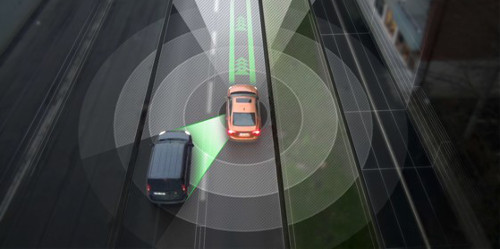
With Google planning to introduce its driverless cars for public use over the next three years, it should come as no surprise that other car manufacturers around the world are attempting to do the same as well. Here are five of the most interesting full-size driverless cars hoping to hit the market soon.
1. Volvo Drive ME

Photo source: Volvo
The Swedish automaker announced in December 2013 that it’s ‘Drive Me’ project would start testing 100 self-driving cars on Swedish roads by 2017.
The project involves transport authorities, vehicle manufacturers and legislators, which Volvo hopes will distinguish it from other smart car projects.
The technology, called Autpilot, features radar systems and onboard cameras alongside Volvo’s own cloud platform, and would allow motorists to switch from driverless mode to full manual control.
Volvo said ordinary customers would do the driving in everyday conditions on about 50km of selected roads in and around Gothenburg.
Erik Coelingh, technical specialist at Volvo Cars, said: "The test cars are now able to handle lane following, speed adaptation and merging traffic all by themselves."
2. Induct Navia

The French auto specialist launched its Navia shuttle car at the Consumer Electronics Show in Las Vegas earlier this year.
The electronic vehicle, which is able to travel at speeds up to 12.5 mph, uses on-board lasers to navigate through streets rather than GPS.
Users can activate Navia from their smartphones or desktops, according to Induct, while on-board passengers use a touchscreen to select their destination.
Navia, which can carry up to eight passengers, is recharged by induction methods (using magnetic fields) and can run 24 hours a day.
Retailing at $250,000, the car is expected to be used in areas such as airports, university campuses, stadiums and arenas in Europe, Asia and America.
3. Tesla Motors

The pioneering electric car company recently said its goal is to have a driverless car on the market by 2016.
This new model would allow the driver to hand 90% of the control of the car over to the vehicle’s computer system, although fully autonomous cars would take longer to develop, CEO Elon Musk told the Financial Times in September 2013. He added that the car would be developed in-house using Tesla’s own technology, but would not reveal further details of the project.
Nissan

Photo source: Nissan
Nissan is testing fully autonomous vehicles with plans to offer such models to consumers by 2020.
"Such systems mean frustrating and unproductive commutes could become a thing of the past,’ said executive VP Andy Palmer at the Japanese firm’s 2013 Nissan 360 show in 2013.
In the UK, researchers at Oxford University have been testing a modified version of Nissan’s Leaf electric car, equipping it with laser guidance systems, radar sensors and cameras to drive through obstacles on streets.
The Japanese government is also allowing the company to test autonomous vehicle technologies on the country’s roadways.
Britain’s leading contender in the field is the University of Oxford’s Mobile Robotics Group, which this week announced plans to build three two-person prototypes capable of travelling at the less-than-mind-bending speed of 7mph.
5. Mercedes S-500

Photo source: Mercedes
Germany’s Daimler AG, the maker of Mercedes-Benz and smart cars, has also taken steps to gain a foothold in the industry.
In August 2013, a Mercedes Benz S 500 Intelligent Drive research vehicle re-enacted the 100km journey made by Bertha Benz, the wife of the firm’s founder Karl Benz, from Mannheim to Pforzheim.
The vehicle, which is expected to be released by 2020, was equipped with radar systems, sensors and cameras to create 3D maps of its own surroundings, while a navigation system, called ‘Route Pilot’, allowed it to route its destination.
Mercedes, whose technology already allows for partly automated driving, created these digital maps with the help of a division of Nokia, with the carmaker saying the two would continue to collaborate for future autonomous cars.






